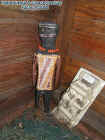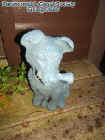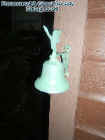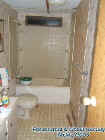|
|
||
|
On the banks of the St. Johns River near
Geneva signs were found by the Florida Anthropological Society the
Timucuan Indians once thrived off the land from 1450-1250 B.C. to 1300-800
A.D. Proof of this is found at a place known today as Cooks Ferry where
many pottery shards can be found along the river. Also a very large shell
midden can be found here hidden by growth, trees, and many wildflowers. Of
course when the Timucuan Indians died out very little was left behind
however this was not the only Indian tribe to inhabit this area.
In 1836-1837 before an attack on FT. Mellon which today is present Sanford this was a Seminole Settlement. The leader was Emaltha also known as King Philip so the white settlers called it by his name. King Philips son named Coacoochee which means wildcat led about 200 blacks and Seminoles against the soldiers at Ft. Mellon. which seemed to be a huge success since the soldiers Fled south of Geneva probably around the Fort Lane area which we also investigated. If you remember King Philip was responsible for the burning of many plantations and sugar mills in central Florida which we also investigated. The historical marker was placed at the settlement in 1985 and a ceremony was done which included a tribal dance by Cherokee Chief H.A. Rhoden known as Red Eagle. Before the Seminole Warms broke out they called this area "The Gap" perhaps because of its location. Many notable anthropologist visited this area after the Seminole wars started from the 1850s and on. Names like Daniel Britton, Jeffries Wyman, Clarence B. Moore etc found evidence of both Orange and St. Johns Cultures in this area. In the 1850s after the Seminole Wars had ended the site was called Cook's Ferry because a man by the name Mr. Cook operated a ferry crossing at this site. He owned one of four ferries on this section of river which was guided by submerged fixed wire cables. The settlers citrus and produce was hand-poled across to reach the markets in Sanford. The poles were grooved to slide on and grip the cables when pulling pressure was applied by the ferry operators. This location eventually became a port for 39 steamboats. Remnants of concrete and wood still exist which show signs it once existed back here. In 1916-18 the Osceola Cypress Co. was a timber company from around Cedar Key formed a new company in the area which would be beneficial cause of the nearby St. Johns River. A self sufficient mill town was built to house around 200 people and it was called Osceola. This mill town was near Cooks Ferry which became a fishing camp eventually and an area that had a turpentine camp. The area in 1926 was a principal commercial industrial community in Seminole county with a saw mill, citrus growing, a coca-cola bottling plant, turpentine manufacturing, commercial fishing and even cattle raising. Unfortunately the community began to die and the dream of this settlement becoming a large city diminished. Today the area is full of trails, woods, and farms. The area is extremely overgrown and fairly eerie. You hear all kinds of odd noises back here and their are remnants that at one time a settlement existed back here. Some areas back here are swampy while others are just wide open rolling hills. You almost can feel being watched back here by something of the supernatural as in order to even get to King Philipstown is a long woodsy hike. At one time this area use to be a bike trail and historic site people could visit now it lays almost forgotten. But the area is very old and beware because the locals will shoot you if you are caught back here. © By Rick-AngelOfThyNight
|
||
|
|
|






























